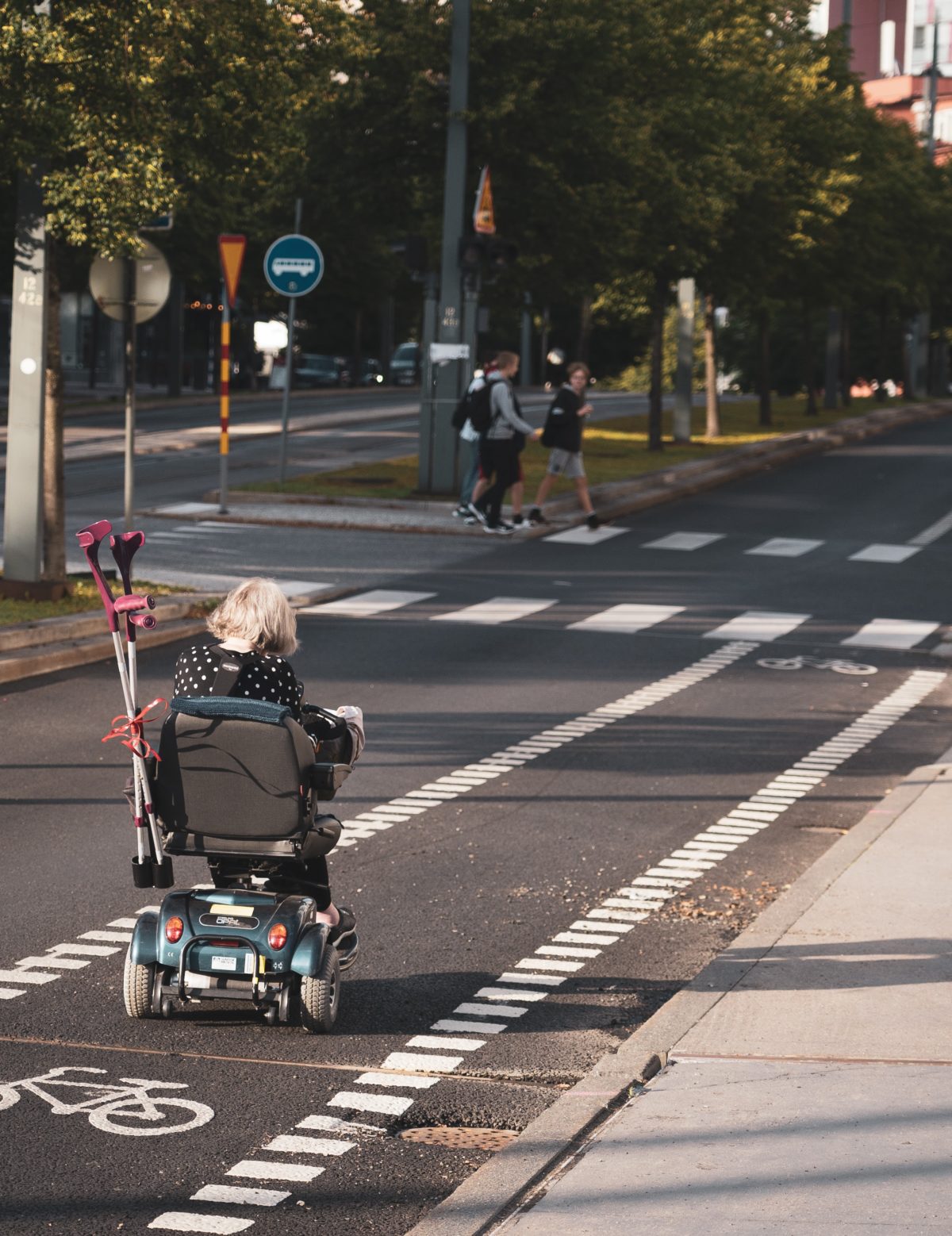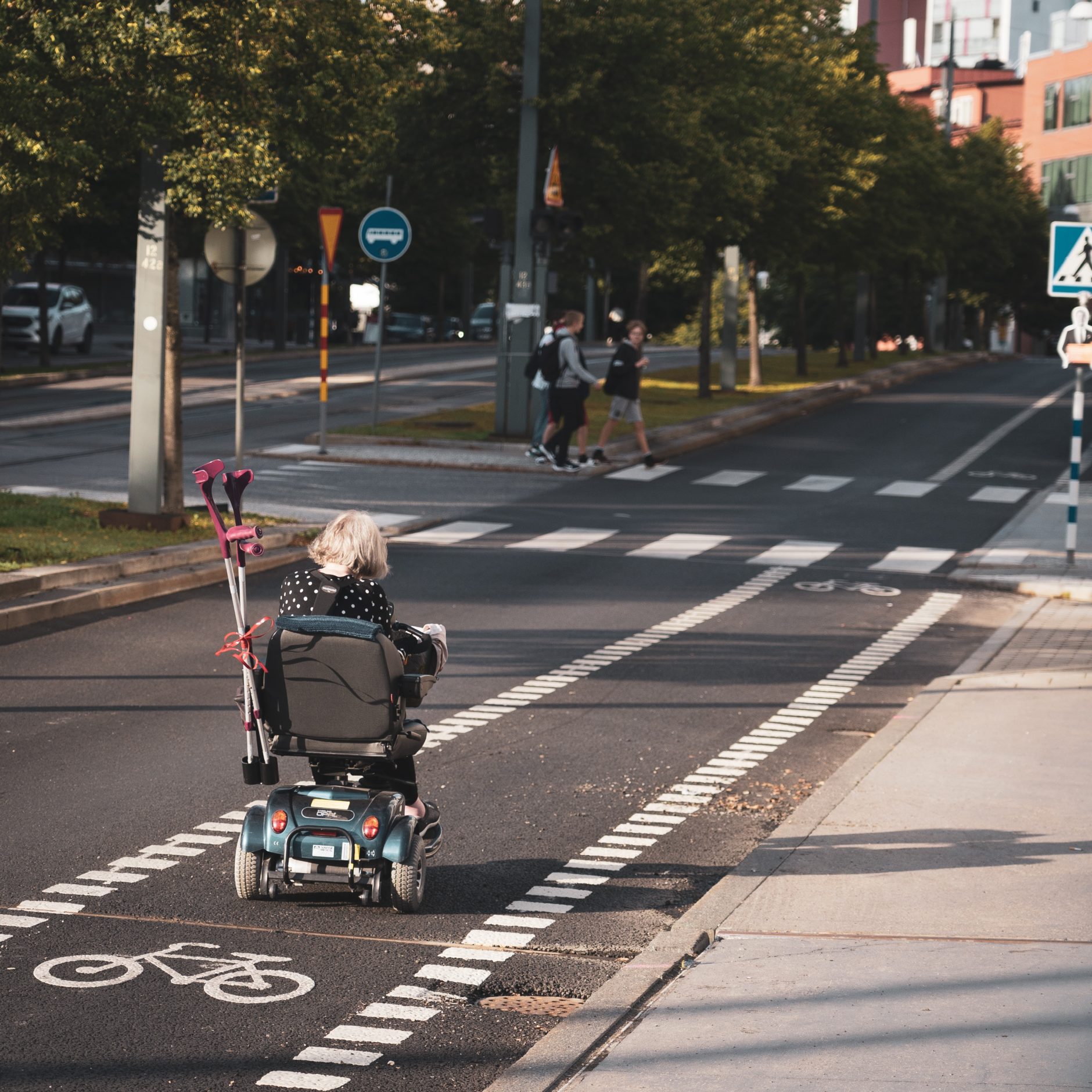People have misconceptions guided by myths about disability housing. These misconceptions reinforce stereotypes and wrong information about people with disabilities and their housing needs.
MYTH #1 - People with disabilities just prefer to live at home with their parents.
In California, over 62% of adults with disabilities live at home with a parent or guardian, and the same is true in states across the country. Sometimes people say that the reason is just that people with disabilities prefer to live at home with their parents well into adulthood. But, a 2019 national housing study conducted by The Arc of the US found that 79% of the adults with intellectual and developmental disabilities (I/DD) surveyed wanted to live in their own homes. Only 10% said they desired to live with their family or parents. Additionally, a majority of people with disabilities who partner with The Kelsey on housing development and advocacy have also expressed their preference to live in their own homes.
A True Story
Liz Grigsby, Board Member at The Kelsey, shared with us that for her, she was ready to live without her parents and move out at 18! She grew up in Northern California, and after finishing high school moved to New York City. While she enjoyed her living there, it wasn’t accessible, and for that reason, she decided she needed to move back to the Bay Area. Today, Liz lives on her own in San Francisco with her two cats and support staff.
MYTH #2 - People with disabilities can't live on their own. Group homes are the only housing for people with disabilities.
For a lot of people, when they hear housing for people with disabilities, they immediately think of group homes and frustratingly people often question whether people with disabilities can even live in their own homes. News that shouldn’t be news…People with disabilities can and do live on their own! Unfortunately, people often can’t find housing affordable to them, face major accessibility barriers, and/or don’t get the support they need to live on their own. People with disabilities can live independently. Many advocates tell us they prefer to live independently or in housing with just a roommate or their partner, where they have more choice and control.
A True Story
JanpiStar Crespo lives and thrives living on their own. They moved to the Bay Area from Puerto Rico three years ago and now dance full time at Axis Dance Company. Since the effects of COVID-19, they’ve continued to use their home for work, and have continued to teach contemporary dance and salsa to many others!
MYTH #3 - Communities have already created lots of housing for people with disabilities.
No, there’s not enough. After institutions closed, we never invested in robust housing options for people with disabilities. This is why less than 12% of adults with developmental disabilities own or rent their own homes. In San Jose, where The Kelsey Ayer Station will be located, the San Andreas Regional Center serves 7,425 individuals with developmental disabilities; but, there are only 225 units for their clients across the entire Santa Clara County. We see the same in cities and counties nationwide.
A True Story
Most of the time when and if housing is finally offered, it’s still out of reach. This month Myra was sent a housing option; it was double the price of her monthly housing budget and in an area miles away from her family, meetings, and community. When housing is only available far away, people like Myra would have to take on additional transportation costs out of pocket and live distanced from their network and community.
MYTH #4 - The best place to build housing for people with disabilities is outside of the city.
People make statements that cities are too expensive to build housing and that people are safer outside of cities. They say we should only build housing in certain places or communities, but people with disabilities should have housing options in all types of communities, of all sizes and kinds. Cities should be one of those options. Urban housing has an increasing number of community benefits for people with disabilities like access to public transit, proximity to job and recreation, nearby services and medical care, and dense development opportunities to build connected communities.
A True Story
In partnership with SPUR, we hosted a tour of San Francisco through a lens of accessibility and inclusivity. We visited a BART station, an affordable housing community, and a service provider. With the convenience of navigating supports and services, restaurants, recreation, and jobs without ever needing a car, cities are a great option for people of all abilities to live in a thriving community. Disability advocates have shared that they enjoy cities because they can access transit, their job, friends, and activities as well as live alongside lots of different kinds of people.
MYTH #5 - People with disabilities receive enough government funding to cover the cost of their housing.
Some people think there is money people with disabilities automatically receive to cover their housing costs. Not true. Research from The Arc and the Technical Assistance Collaborative reveals that there is nowhere in the United States where a person relying on Supplemental Security Income (SSI) can afford a studio apartment. Without access to affordable housing, people with disabilities are forced into segregated, costly institutional settings or become unhoused and/or housing insecure.
A True Story
People with disabilities are more likely to live in poverty and more likely to experience homelessness. According to the National Disability Institute, approximately 27% of people with disabilities live in poverty, compared to 12% of people without disabilities. The poverty rate is even higher for Black and Brown people with disabilities. Disproportionate rates of poverty directly influence housing stability and homelessness. Approximately, 40% of people experiencing homelessness are people with disabilities.
Harold, a client of Miracle Messages, is an example of the many people with disabilities who live unhoused in our communities. People don’t have access to rental assistance or other funding to be able to afford the cost of housing. Policies that fund inclusive, accessible, affordable housing developments or provide rental assistance to people with disabilities are essential solutions to this unmet housing need.
MYTH #6 - All it takes for a building to be disability accessible is working elevators and wider doors.
No, not true! True accessibility is more than just mobility access and ADA compliance. And, just because it’s a new building, doesn’t mean it’s accessible. Though working elevators and wider doors are an important start, it’s not the complete solution. When we’ve hosted design focus groups and worked with architects, people with disabilities have shared diverse accessibility needs. Sensory-friendly design choices that consider light, color, material, and sound support for people with autism and other neurodiversities. Better wayfinding that supports the interior and exterior navigation needs for people with vision or cognitive disabilities. Bathroom designs, door swings, and kitchen adaptability all matter too. People share concerns about chemicals and materials that trigger medical or cognitive challenges. And, access to services and supports is an accessibility need in itself that many overlook. One size does not fit all when it comes to accessibility and it’s important to take a cross-disability approach to accommodations and design. The best strategy is to start with something that is Universally Designed, meets code, and is adaptable by individuals.
A True Story
This is one of our Community Advisory Groups — affectionately called CAGs. The Kelsey Ayer Station design and programs came directly from ideas developed from workshops, our CAG, and through human-centered design workshops; all of which included people with disabilities and other lived experiences. The design choices we’ve made in San Jose include: utilizing universal design where not just some units and places are accessible and visitable but *all* are; including a sensory garden and other sensory-friendly design choices in lighting and color; full-adaptability in each unit so people can make their space work for a diversity of disabilities and preference; and creating spaces where self-directed support staff can have offices or meet with residents in the building. We’re working more with architect Erick Mikiten and others on inclusive accessible design standards. Stay tuned for more!
We also asked our community what Myths they saw; here are some additional myths and truths that were shared on Twitter.
Debunking these myths and getting informed is critical to effectively engaging in advocacy for more inclusive and equitable housing. Debunking myths and getting informed must also be continuous practice because there will always be more people with disabilities to learn from, listen to, and work alongside. From work meetings, family dinners, to the halls of government, it is on all of us to disrupt these myths, get informed, and amplify the facts!
So, what now? We invite you to use this as a tool for your next meeting, whether advocating for more housing in the neighborhood or more inclusion in your community, these insights can be directly used and implemented. Here are three follow up actions you can take:
- Speak up: when in a meeting or program and people are making decisions or planning policy based on untrue facts, note the real story of the housing needs and options for people with disabilities
- Elevate truth with impact: the best way to combat myths is with true stories of what’s really happening. Share your stories and connect with people with disabilities to share their own.
- Support the leadership of people with disabilities: commit to disability representation in your organization and your work, whether that be related to employees, board members, consultants, advisory councils.
Sources
- https://futureplanning.thearc.org/pages/learn/where-to-start/deciding-where-to-live/housing
- http://www.tacinc.org/knowledge-resources/priced-out-v2/
- https://povertyusa.org/facts
- http://www.advancingstates.org/sites/nasuad/files/Disability-Race-Poverty-in-America.pdf
- https://www.usich.gov/resources/uploads/asset_library/Homelessness-in-America-Focus-on-chronic.pdf

